A division is a large military unit or formation, usually consisting of between 6,000 and 25,000 soldiers.
United States special operations forces (SOF) are the special forces of the United States Department of Defense's United States Special Operations Command (USSOCOM) within the United States Armed Forces, used for special operations.

The Intelligence Corps is a corps of the British Army. It is responsible for gathering, analysing and disseminating military intelligence and also for counter-intelligence and security. The Director of the Intelligence Corps is a brigadier.

This article describes the current structure of the Australian Army. It includes the army's order of battle and the headquarters locations of major units. Members of the Australian Army also serve within joint units of the Australian Defence Force which fall outside the direct command of the Australian Army.
Reconnaissance, surveillance, and target acquisition (RSTA) refers to a joint doctrine of reconnaissance, surveillance and target acquisition conducted by the United States Armed Forces. RSTA operations are designed to support military operations at a strategic, operational, or tactical level, either by dedicated RSTA forces or those which possess the capability.
Marine Air-Ground Task Force is a term used by the United States Marine Corps to describe the principal organization for all missions across the range of military operations. MAGTFs are a balanced air-ground, combined arms task organization of Marine Corps forces under a single commander that is structured to accomplish a specific mission. The MAGTF was formalized by the publishing of Marine Corps Order 3120.3 in December 1963 "The Marine Corps in the National Defense, MCDP 1-0". It stated:

The 20th Armoured Brigade Combat Team, previously the 20th Armoured Infantry Brigade, is an armoured infantry brigade formation of the British Army, currently headquartered at Wing Barracks, Bulford, Wiltshire, as part of the 3rd Division.

The 11th Security Force Assistance Brigade is a brigade of the British Army which is intended to train and assist foreign forces. In 2021, under the Future Army changes, the brigade was redesignated, formerly being the 11th Infantry Brigade & HQ South East. Prior to the Army 2020 changes in 2013, the brigade was temporarily activated for deployment to Afghanistan, and before that engaged during the two World Wars.
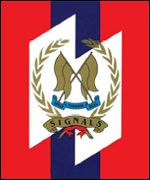
Signals is a formation of the Singapore Army responsible for communications on multiple platforms and local networking on the battlefield. It also supports the Singapore Armed Forces by developing the capacity for network-centric warfare in the form of Integrated Knowledge-based Command and Control (IKC2) and Command, Control, Communications, Computers and Intelligence (C4I) operations.
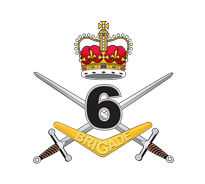
The 6th Combat Support Brigade is an Australian Army brigade. First formed in 1912 as a Militia formation to provide training under the compulsory training scheme, the brigade was re-raised during the First World War as an infantry unit of the all volunteer Australian Imperial Force. It subsequently served at Gallipoli and in France and Belgium on the Western Front. In the 1920s, as part of a reorganisation of the Australian Army, it became part of the 3rd Military District of the Citizens Military Force, encompassing units from Victoria and South Australia. In 1991, it became part of the Ready Reserve Scheme, based at Enoggera Barracks, in Brisbane, Queensland, before being disbanded in 1996 when the scheme was discontinued. The brigade was re-raised on 1 March 2010 to oversee the Army's command support and intelligence, surveillance, target acquisition and reconnaissance units.
Land Command was a military command and part of the structure of the British Army from 1995 to 2008. Its headquarters was at Erskine Barracks, at Fugglestone St Peter, some four kilometres northwest of Salisbury in Wiltshire.
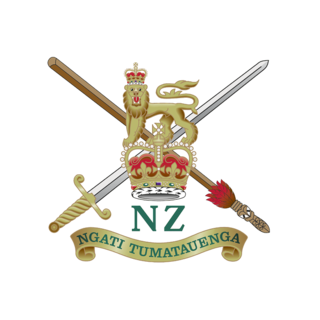
The New Zealand Intelligence Corps (NZIC) analyses information from a variety of sources and provides commanders with intelligence on such things as enemy locations, capabilities and intentions. Corps personnel also provide advice on Field Security on operations.
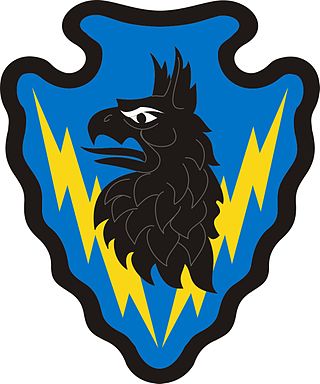
The 71st Expeditionary Military Intelligence Brigade (EMIB) is a unit of the Texas Army National Guard.

1st Intelligence, Surveillance and Reconnaissance Brigade of the British Army was created as part of the Army 2020 reform, to command military intelligence, ISTAR, and electronic warfare units.
The 4th Military Intelligence Battalion is a military intelligence unit of the British Army's Intelligence Corps, which provides close intelligence support to the headquarters for the only warfighting division in the army.

The 525th Expeditionary Military Intelligence Brigade (Expeditionary) is a unit of the United States Army specializing in the acquisition and analysis of information with potential military value. On 28 October 2014, the unit was reflagged from the "525th Battlefield Surveillance Brigade" to an expeditionary military intelligence brigade, the first of its kind.
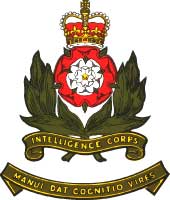
5 Military Intelligence Battalion is an Intelligence Corps Army Reserve unit in the British Army. It is based in Scotland, with sub-units in Edinburgh, Gateshead and Leeds and detachments in Glasgow and Chesterfield. It is partnered with 1 Military Intelligence Battalion, a Regular Army unit based in Catterick Garrison, North Yorkshire.

The 1st Reconnaissance Brigade was a short-lived specialist formation of the British Army which administered the formation reconnaissance regiments not attached to a division or brigade, and was disbanded sometime between 2005 and 2006.

The Intelligence Command is a military intelligence formation of the French Army formed following the end of the Cold War and expanded after the 2016 reorganisations.
The Field Army Troops is the name given to those units falling under direct control of Headquarters, Field Army.














